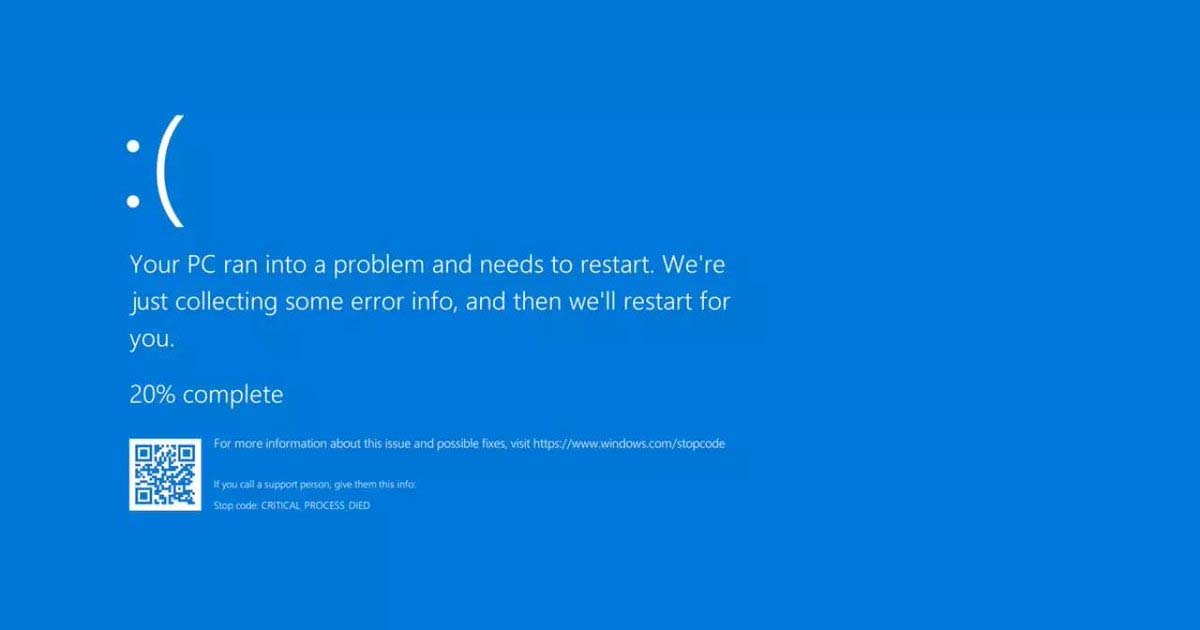
We’ve been warning about this for a while. Today, a global tech outage, primarily affecting Microsoft services, caused widespread chaos by locking people out of bank accounts, leading to hospital cancellations, and grounding flights worldwide.
The Blue Screen of Death appeared across multiple sectors, inducing panic and confusion. United, Delta, and American Airlines halted all flights. Both Microsoft and CrowdStrike, a cybersecurity firm responsible for a faulty update, have been working to resolve the issue. Emergency services and hospitals were severely impacted, with manual operations and system failures becoming rampant. The incident highlights the critical vulnerability and overreliance on centralized tech providers.
What Microsoft and CrowdStrike Are Saying
Microsoft said they’re working on the problem and things should get better soon. CrowdStrike, the cybersecurity firm involved, said the issue came from a bad update for Windows, not a cyberattack. They’ve isolated the problem and are fixing it.
The Impact Around the World
The outage affected everything. Hospitals are having system failures, police are using pen and paper, and air traffic controllers had to inform pilots mid-flight about the communication breakdowns. Some flights are back up, but delays are everywhere. Even emergency services had to go manual in places like Phoenix and New Hampshire.
The recent global tech outage hit hard, showing just how much we rely on centralized tech providers. When one goes down, the ripple effects are huge. Here’s why this incident is a wake-up call for everyone to step up their preparedness game:
Widespread Impact
- Airlines Grounded: Major airlines like United, Delta, and American had to halt flights, throwing travel plans into chaos.
- Bank Access Denied: People couldn’t get into their bank accounts, making essential financial transactions impossible.
- Healthcare Systems Down: Hospitals had to cancel appointments and go back to pen and paper, putting patient care at risk.
Essential Services Affected
- 911 Systems: Emergency services had to use pen and paper, slowing down response times significantly.
- Retail and Media: Supermarkets and media outlets went dark, showing how much we depend on technology in our everyday lives.
Potential for Larger Future Threats
This outage hints at even bigger problems we could face down the road. Here are some scenarios that could make things much worse:
Cyberattacks
- Coordinated Cyberattacks: If cybercriminals hit multiple critical points at once, it would be way more devastating than a single faulty update.
- Pre-Installed Malware: With electronics being shipped with malware already installed, the threat is growing.
Critical Infrastructure Vulnerabilities
- Privately Owned Infrastructure: Over 85% of critical infrastructure in the U.S. is privately owned, often with inconsistent oversight and resources. This leaves many exploitable gaps.
- Supply Chain Attacks: The cyber-supply chain is always at risk, with vulnerabilities in manufacturing and software updates posing big threats.
Economic and Social Disruption
- Economic Collapse: Long outages can mess with financial markets, leading to economic instability or even collapse.
- Social Unrest: If people can’t access essential services during a major tech outage, panic, looting, and unrest could follow.
How to Prepare for Cyber Attacks and Tech Outages
Today’s global tech outage is a critical wake-up call about the importance of preparedness in our digital society. When our world relies so heavily on technology for everything from communication to emergency services, these systems’ vulnerabilities can have far-reaching consequences.
Here’s how to stay prepared:
We suggest reading our article on EMP Preparedness: Preparing for an Electromagnetic Pulse Attack and Protecting yourself from Attacks on our Power Grid.
Part of truly being prepared for anything, means knowing exactly how this type of threat will affect your long-term preparedness efforts. By performing a realistic threat assessment, you can get a better idea of how this threat will affect you and what you can do to prepare for the situation.
The Ultimate Situational Survival Guide: Self-Reliance Strategies for a Dangerous World: This guide provides in-depth strategies for self-reliance, helping you prepare for a wide range of threats, from economic collapse to natural disasters.
When the power lines go down, the internet blackout starts and the grid crashes; there is one line of emergency communication that will still be alive and well – HAM RADIO. A good survival plan must include some type of emergency communications equipment. The ability to send and receive information, after the grid goes down, is vital to being able to survive that situation.
For more information on Ham Radio and Emergency Communication, check out these articles:
- Prepper Radio: The No-BS Ham Radio Technician Exam Prep Guide
Your Key to Passing the Amateur Radio Technician License Test and Taking Your Emergency Communication Skills to the Next Level - HamRadioPrepper – Visit our site on emergency communication!
- Ham Radio Prepper: Communications Monitoring: The Importance of Radio Monitoring and Intelligence Gathering During Crisis Situations
- Emergency Communications When TSHTF
- Ham Radio Cheat Sheet
- Situational Intel: Knowledge is Power during a Crisis
Stock up on the Basic Survival Necessities
Think about what things you need to survive, and start to stock up on those items now. Water, Food, Shelter and Protection should all be at the top of the list. In my opinion water, food, shelter and protection are the most important things that you can stock up on. If you can cover those four categories then you will be far better off than 99% of the country.
Be Prepared to Feed Yourself when the Collapse Hits!
- Best Emergency Food: The Top Survival Food Supplies
- Survival Food – 56 Long-Term Survival Foods and Supplies at the Grocery Store
- Prepper 101: Your Survival Guide to Getting Started
Grocery Options that ship right to your Home:



This just goes to show how technology is a double-edged sword. On one side, it aids us in our day-to-day lives and can be a great asset, but on the other side, it can be our Achilles heel, and completely bite us in the rear.